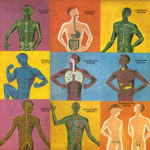Today’s post is brought to us by Betty Doyle of Depressionpills.net.
College of Montpellier analysts indicate us how depressive disorder is related to cholesterol levels and gender.
Do you know the Institute of Medical and Health Research (INSERM) and University of Montpellier financed professionals indicated that regulating ‘good’ and ‘bad’ cholesterol levels may help avoid mood problems among aging seniors?
In a recently available issue of the publication Biological Psychiatry published in July 2010, leading researcher Dr. Marie-Laure Ancelin of INSERM (Institut National de la Santé et de la Recherche Médicale https://www.inserm.fr) said that gender specific regulation of levels of cholesterol may help stop depressive disorders in the elderly.
French analysts followed a significant group of women and men aged sixty-five and older for 7 years.
They noticed that depression in women was connected with lower levels of “good” high-density lipoprotein cholesterol (HDL-C), which puts them at higher risk for cardiovascular disease, including heart stroke.
On the other hand, depressive disorder in men was related to low levels of “bad” low-density lipoprotein cholesterol (LDL-C). This association was strongest in men with a genetic vulnerability to depression related to a serotonin transporter gene.
Therefore, proper regulation of HDL-C and LDL-C levels can help stop depressive disorder in the aging adults, the study concluded.
The study got published in the July 15 issue of the journal Biological Psychiatry (Reference: https://www.biologicalpsychiatryjournal.com/article/S0006-3223(10)00393-8/abstract).
Major nutritional sources of cholesterol include dairy products, egg yolks, beef, pork, chicken, and shrimp. Plant products such as flax seeds and peanuts have cholesterol-like compounds known as phytosterols.
Total cholesterol is defined as the sum of HDL (High-density lipoprotein), LDL (Low-density lipoprotein), and VLDL (Very-low-density lipoprotein). Usually, only the total, HDL, and triglycerides are tested.
It is strongly recommended to have cholesterol tested more often than five years if someone has total cholesterol of 200 mg/dL or higher, or if a man over age 45 or a woman over age 50 has HDL (good) cholesterol under 40 mg/dL, or exist other risk components for heart problems and stroke.
So…exactly what can you do to rise your HDL (good) and decrease your LDL (bad) levels?
1. Exercising can substantially increase HDL cholesterol while lowering LDL cholesterol.
2. Smoking has been shown to lower HDL while raising LDL cholesterol.
3. Highly processed, trans fats at the same time raise LDL cholesterol and lower HDL cholesterol.
4. Monounsaturated fats such as those found in essential olive oil and avocados raise HDL and reduce LDL.
5. Fatty fish like salmon and sardines contain omega-3 fats that raise HDL and lower LDL.
6. Whole, intact cereals contain dietary fiber and niacin, both of which raise HDL and may lower LDL.
Now it’s all to you…
About me – Betty Doyle contributes articles for https://www.depressionpills.net an anti – depression pills blog. It’s a nonprofit site dedicated to her personal depression journey. The blog is targeted on offering energy and hope to any person who is suffering from depressive disorder and supports those people to find the energy to fight against the effects of depression. This way she wants to help alleviate some of the stigma mental illness depression can cause and help the public perception of mood difficulties.






Leave a Reply